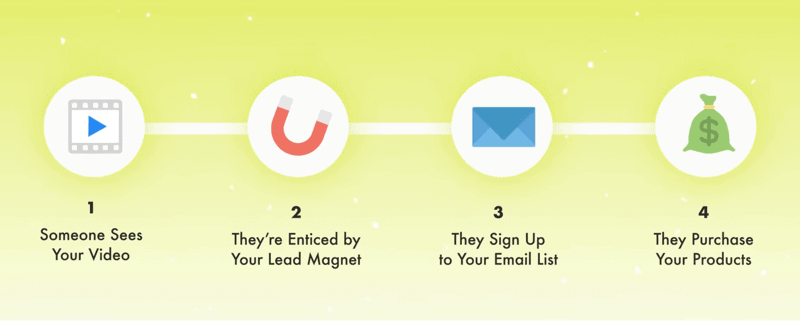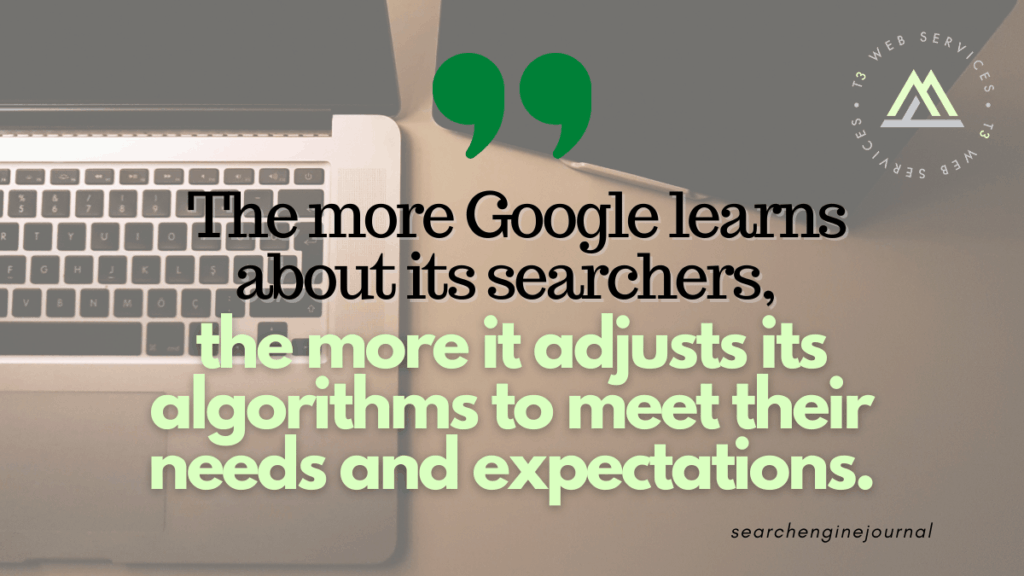It’s easy to get caught up in the fast-paced world of digital marketing and social media, but it’s important not to forget about the basics. There are a lot of things that can go wrong with your digital marketing campaign – whether you’re new to digital marketing or have been doing it for years. One of the most important steps in any digital marketing campaign is measuring. It’s worth also assessing whether you’re on the right track at all – too often, marketers make some key, fundamental errors in their approach which sets them on the wrong path from the get-go. Consistency is key to successful marketing. It will often take multiple points of exposure before a potential customer engages with relevant content or ads. The first step is figuring out which data is relevant. This should be determined by your goals, which you can then turn into KPIs (key performance indicators). Once you’re measuring the right data, it’s much easier to see what’s working and what isn’t.
10 Top Data Analysis Mistakes Digital Marketers Make


Reporting and data analysis inevitably encompass a significant amount of our time as digital marketers.
However, even experienced marketers can trip up and make a few common mistakes when looking at data and making decisions.
You need to stay mindful of errors that can result in looking at the wrong data, reaching the wrong conclusions, or leaving the door open for faulty interpretations from a client or boss.
In this article, you’ll learn 10 common mistakes digital marketers make when analyzing data:
- Not looking at a statistically significant timeframe.
- Not factoring in seasonality.
- Ignoring the impact of offline activity.
- Not accounting for multi-channel engagement.
- Reporting on numbers without conclusions.
- Focusing on the wrong KPIs.
- Making decisions based on faulty data.
- Not incorporating backend data.
- Visualizing data poorly.
- Assuming that you can measure everything.
If your goal is to generate an average of 100 qualified leads a month, you could accomplish that goal by receiving 10 leads one week and 30 leads for each of the next three weeks.
Very few businesses will see the exact same number of leads coming through every single day or week.
If you were to judge projected performance just based on the first week alone, you might assume that lead volume is abnormally low. However, the account still reached the goal of 100 leads/month with future weeks picking up in volume.
Many business owners and CMOs are (understandably) tied to the numbers and monitoring daily/weekly results.
Marketers should help provide the wider context to minimize fears around the numbers being down for the day when sales are up for the month.

3 Quality Signals That Help Content Rank Higher in SERPs


Google gives insights into how they perceive quality. Relevant, comprehensive, well-structured, and engaging content earns the best looks. Let’s look at three strategies to elevate some of those signals in the eyes of Google.
1. Increase topic depth with semantic SEO
Although Google once looked only for keywords used to search, its natural language processing models now understand how search queries relate to each other. Semantic SEO is not only about optimizing for a single term but many keywords, phrases, and subtopics in the same space. Let’s say you write a piece on interview software. You include references to interviews, candidates, recruiters, and hiring managers. Thanks to NLP models, Google recognizes these terms have a strong relationship with one another. Since your content contains all those related phrases, Google will perceive the page as having more topical depth than competing pages that don’t include all those terms.
2. Show topical breadth with your architecture
If you improve the first quality signal in your content, your pages will likely be longer. Make sure you don’t sacrifice other important quality indicator elements like information architecture.
Information architecture refers to how your content is labeled, structured, and organized. It also encompasses how the pages are organized in your site’s hierarchy. It would help if you created an SEO-friendly information architecture that signals users can easily navigate your content.
3. Reinforce topical authority with content clusters
If your site tackles too many topics, Google is unlikely to perceive your site as having topical authority. A keyword cluster content model can help cement your topical authority. You pick a primary topic around which all the subtopics relate. Create content that revolves around those subjects, related questions, or long-tail phrases. Always include links to your internal pillar pages. A well-planned editorial calendar can help ensure you cover the topics and publish that content consistently.

https://contentmarketinginstitute.com/2021/05/quality-signals-rank-higher-google/
5 Free Google Tools to Upgrade Your SEO Strategy


1. Google Trends
Google Trends is used to track the “trends” around search queries. This makes it a great tool for keyword research.
Finding new keywords
When you go to Google Trends, you’ll see a search bar where you can input a broad topic or specific search query. Upon entering your query, you’ll be presented with a trend chart of interest in the query over time.
While this may be useful, the real gems are at the bottom of the page: Related Topics and Related Queries.
Advanced keyword research
Even at a base-level, Google Trends is helpful, but you can always take it a step further. Across the top of Google Trends, there is a menu that allows you to specify a region, time period, category, and search platforms.
Region allows you to determine where you want to pull search data from geographically. This can be especially useful when working on local SEO projects.
2. Rising Retail Categories
Though it’s almost impossible to predict what the Next Big Thing is going to be in e-commerce, you can still stay on top of the game with Rising Retail Categories.
This is Google’s compilation of data on retail. On it, you’ll find currently trending product categories and the searches around them, as well as where exactly they’re trending.
3. Visual Stories
Google summarizes Visual Stories as “Bite-size visual stories for busy marketers, driven by trending topics and data from Google.”
These stories range from holiday shopping trends to specific industry case studies, and more. They’re interactive slides, each with a few insights or data points.

https://moz.com/blog/free-google-tools-for-seo
With Great Content Power Comes (Yep) Great Responsibility – What Will You Do With It


Brands face more pressure than ever – from consumers, employees, and (in some cases) shareholders – to “do the right thing” when it comes to societal issues. Our words are scrutinized, shared, commented on, and acted on. And they should be.
Which leads us to ask: Are brands wielding that power responsibly? And what does responsible use of content’s power look like? What happens when a brands’ values don’t align with the audience’s best interests? What happens when our values as content leaders don’t align with our employer’s values?
Some people – like Trent Moy, a marketer-turned-advisor who runs a consultancy specializing in ethics, culture, and corporate responsibility – believe the definition of ethics in marketing is simple: It’s how we make a decision when something important is at stake.
And since we make decisions all the time, Trent says, ethics permeate everything we do in business (and – by extension – marketing). Fortunately, he also says having the desire to make quality decisions means you’re already behaving ethically.
But, as wordsmiths, we have the power to inspire change – even behavioral changes – and that makes ethics especially important for us, says Simon Longstaff, author of Everyday Ethics. It also makes it easy to cross a line. “Marketing at its best informs and inspires, but it doesn’t manipulate,” he says.

https://contentmarketinginstitute.com/2021/05/ethical-marketing-content-responsibility/
How to Make a Successful Website: 11 Critical Factors


You’re investing in digital marketing to drive people to your website — now you need to deliver on the experience they’re expecting when they arrive.
Here’s how.
1. Clearly Define Your Goals
While we should always start a web or marketing project with goals, we need to consider both ourselves and the user with our website.
The site can only generate traffic, leads, and sales when we make sure we have what our target audience wants and we can deliver it for them in a satisfactory way.
2. Budget Properly
Prepare to invest in your web presence. I have known a lot of brands that overspend on their sites and then go cheap on marketing. Conversely, there are those who want to go big on marketing and won’t put anything into their website.
Find the right CMS, technology, and type of site for you.
Off the shelf? Know what the limitations are so you don’t have to throw it away and start over before you have ROI on it.
3. Earn the Trust of Your Audience
Be clear and transparent in what you are offering and what you want your audience to do.
Know what motivates them and what you’re strong at. Leverage that.
Too often, websites lack the emotional or credibility connections needed to earn trust and the lead or sale. If you can’t put names, pictures, culture, philosophy, or some type of story on your website, you’ll lack the ability to state what you’re about.
4. Find Ways to Stand Out
Differentiation is key. You can still use a website template and look different.
This goes along with earning trust.
When you tell your story and create factors like price, quality, customer service, what you do with profits, how you give back, etc., you create the bond needed to stand out from the rest of the templated and quickly spun-up sites selling the same products or services.

https://www.searchenginejournal.com/how-to-make-a-successful-website/257617/
How to Structure Marketing Videos for Success


#1: Script the Flow of Your Video
Making an effective video for business starts with your script. Here’s a structure you can follow to create video content with a marketing intent and serve the audience you want to reach.
Deliver a Compelling Introduction
The first part of the pre-production phase is the intro. It should let people know they’re in the right spot and that you’re going to help them with the specific reason they clicked on the video.
Pro Tip: Use your target audience’s own language in your introduction. Say something that you’ve heard them say before or the thing that’s frustrating them. Directly address the pain point you’ll be covering in your video.

Share a Call to Action
When you’re creating videos with a marketing intent, lead with the end in mind. You should lead viewers into the next logical video where their interest lies and their pain points are. Show them how you can help with your playlist of content and be their go-to resource.

https://www.socialmediaexaminer.com/how-to-structure-marketing-videos-for-success/
10 Elements of Good SEO Copy


SEO is a huge driver of business success. After all, when you appear in search with content that resonates with readers, it helps increase visibility, drives traffic, and boosts conversion rates. And yet so many people struggle with actually writing good content for SEO.
1. Nail Meta Content
Meta content is like the content teaser you find on the back cover of a book.
It gives readers a sneak peek about what they can expect to find inside.
It can also be the deciding factor in whether the reader will continue to dive in, or put it back on the shelf and reach for something else.
Sometimes, developing great SEO content is simply a matter of developing fresh meta information.
Good meta should follow these rules:
Maximize Your Characters.
Get the most out of this prime real estate. While information should be short and sweet, use all the space you can to draw the reader in.
A great meta description will fall between 50-155 characters before it runs the risk of being shortened by Google. Share as much information as you can to entice the reader to click on your information.
2. Write for Both People & Machines
You know that saying, “If mama ain’t happy, ain’t nobody happy?”
That’s the relationship between consumers and search engines.
If the users aren’t happy, then neither is Google.
In today’s SEO rules, people come first.
By writing content that meets their specific needs and resonates with them, they’ll enjoy a much more satisfying experience.
3. Provide Value
This leads us to our next point: SEO success hangs heavily on the fact that you provide your readers with something of value.
People turn to the internet for two reasons: they have a problem that needs a solution, or they have a question that needs an answer.
Your mission is to provide that solution or deliver that answer.

https://www.searchenginejournal.com/10-crucial-elements-good-seo-copy-today-tomorrow/165670/#close


Leave a Reply